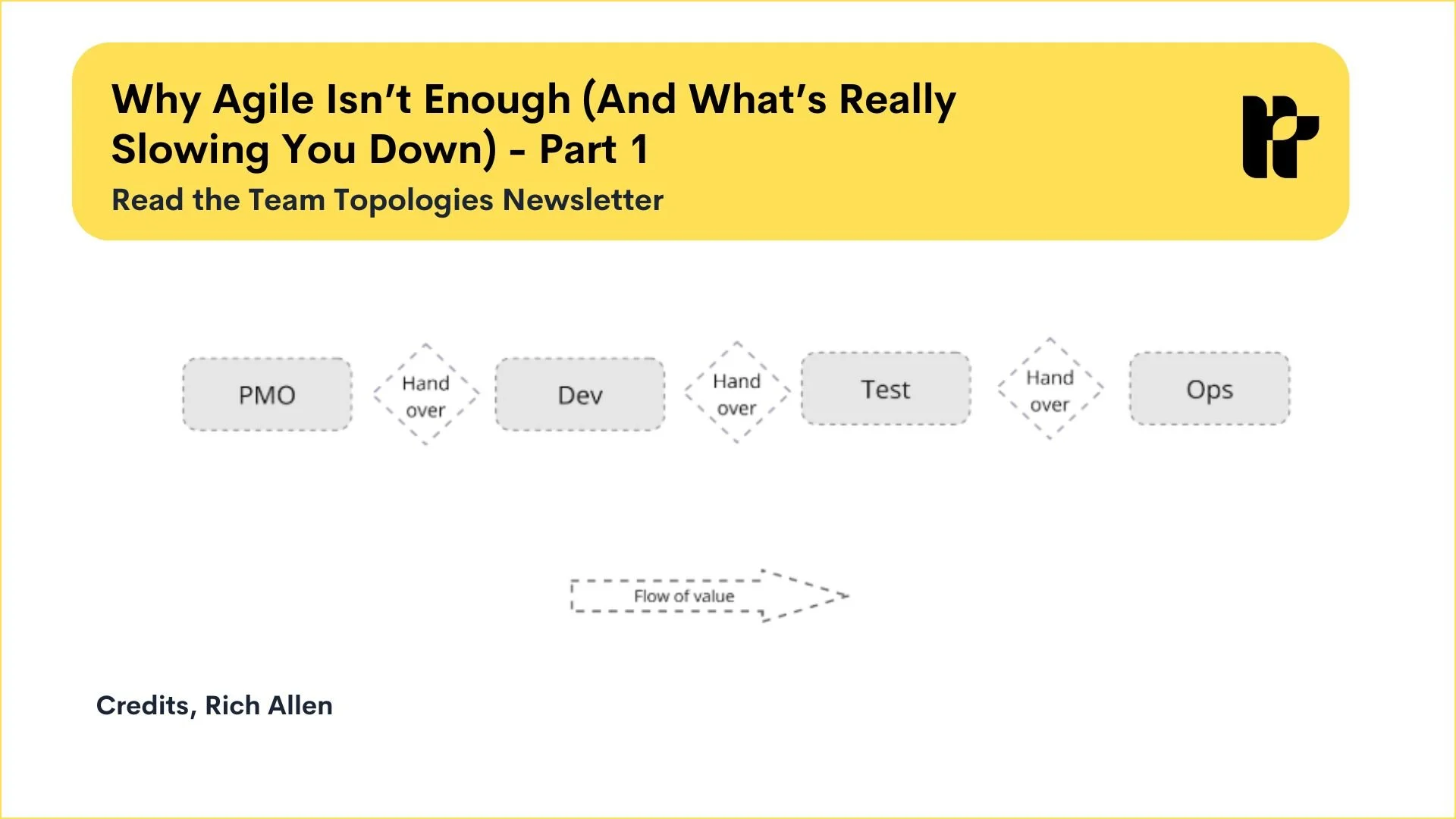Newsletter (June 2024): Architecture for Flow: A Holistic Toolset
Combining Wardley Mapping, Domain-Driven Design (DDD), and Team Topologies offers a comprehensive approach to enhancing business agility and streamlining software development processes. This toolset aligns business goals with technological capabilities, fostering a seamless flow of value and enabling organizations to adapt swiftly to changing market conditions.
Balanced Team Structures
Team Topologies is a pivotal approach in providing a set of principles and practices to reduce team dependencies, bottlenecks and maximize value throughput. Organizations like Amazon and Spotify have transformed their operational models by having more purposeful interactions between different types of teams, such as stream-aligned, enabling, complicated subsystem, and platform teams. Amazon’s "two-pizza teams" and Spotify’s squad, tribe, chapter, and guild structure show how aligning teams with business domains leads to faster innovation and improved customer satisfaction. Netflix uses small, autonomous teams responsible for individual microservices, reducing dependencies and enhancing resilience. Similarly, ING Bank’s agile transformation demonstrates how restructuring around business domains and adopting agile practices can significantly improve delivery speed and customer experience. These examples highlight the importance of maintaining simplicity in team structures to promote agility and efficiency in meeting market demands. This enables teams and business leaders to fast-track the value flow in their organization fast.
Get ready to optimize your teams for fast flow.
Combining Tools for Holistic Efficiency: Wardley Mapping and DDD
Combining Team Topologies with strategic tools like Wardley Mapping and DDD creates a comprehensive toolset that aligns business goals with technological capabilities. ING Bank used Wardley Mapping to anticipate changes and make informed decisions, while DDD ensured their software architecture matched business needs. This holistic approach allows organizations to adapt swiftly to changing market conditions, maintain high innovation standards, and ensure a seamless flow of value. Furthermore, by explicitly treating internal platforms as products and focusing on reducing cognitive load (as suggested in Team Topologies), companies can significantly enhance their developer experience and overall operational efficiency.
For a practical guide on integrating Team Topologies and DDD, explore the mini-book on finding software boundaries for fast flow.
What’s Coming Up Next?
If the topic above sounds compelling and you want to bring that knowledge to your organization join our upcoming event on team boundaries and architecture for fast flow.
There are also several other events planned for the near future.
Real agility for empowered organizations using Team Topologies - what senior leaders need to know.
#DL Summit 2024: Optimizing software team interactions with the Team Topologies approach
Check out the full list of events to see which one is best suited for you. If we missed any, send us an email and we will list it and spread the word.
Stand out from the crowd by building and running a high-performing team-of-teams organization, which adapts to changes in your environment even without your direct involvement.
Join the Community
We are happy to enrich the practice of The Team Topologies with new ideas and best practices. This is why the community plays a crucial role in ever-evolving. A warm welcome to our newest members:
If you're passionate about Team Topologies and want to become an advocate, we would love to have you join us. Or, if you have a story to share, we would be honored to feature it on the website.
Was this newsletter useful? Please share your thoughts on how we can make it better. Send us an email.











